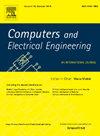Ensemble learning unlocking point load forecasting accuracy: A novel framework based on two-stage data preprocessing and improved multi-objective optimisation strategy
IF 4
3区 计算机科学
Q1 COMPUTER SCIENCE, HARDWARE & ARCHITECTURE
引用次数: 0
Abstract
Accurate point power forecasts are critical for maintaining the security and stability of the grid. However, Load data is volatile and difficult to predict with high accuracy. To improve the stability and accuracy of the model, we proposed a novel hybrid load forecasting framework consisting of three modules. Firstly, we used Successive Variational Mode Decomposition (SVMD) in the data preprocessing module to extract trend features and denoise the data. To reduce the negative impact of feature redundancy on model predictions, we employed feature selection to identify four essential features to aid model training. Secondly, in the ensemble learning module, we address the limitations of single predictive models by combining the models Back Propagation (BP), Temporal Convolutional Network (TCN), Bidirectional Long Short-Term Memory (BiLSTM), Bidirectional Gated Recurrent Unit (BiGRU) and Transformer. Finally, in the improved multi-objective optimisation algorithm module, we implemented various strategies to enhance the optimisation algorithm. We designed some experiments using three load datasets from Australia. The results demonstrated that the mean absolute percentage error values are below 1.25%, with the best value reaching 0.9256%. In contrast, the best result for the mean absolute percentage error of the baseline models was 1.4431% in New South Wales. This represents a 35.9% improvement in load forecasting performance with our proposed model, highlighting its superior accuracy compared to competing approaches. It shows that our forecasting framework is far better than other rivals.
求助全文
约1分钟内获得全文
求助全文
来源期刊

Computers & Electrical Engineering
工程技术-工程:电子与电气
CiteScore
9.20
自引率
7.00%
发文量
661
审稿时长
47 days
期刊介绍:
The impact of computers has nowhere been more revolutionary than in electrical engineering. The design, analysis, and operation of electrical and electronic systems are now dominated by computers, a transformation that has been motivated by the natural ease of interface between computers and electrical systems, and the promise of spectacular improvements in speed and efficiency.
Published since 1973, Computers & Electrical Engineering provides rapid publication of topical research into the integration of computer technology and computational techniques with electrical and electronic systems. The journal publishes papers featuring novel implementations of computers and computational techniques in areas like signal and image processing, high-performance computing, parallel processing, and communications. Special attention will be paid to papers describing innovative architectures, algorithms, and software tools.
 求助内容:
求助内容: 应助结果提醒方式:
应助结果提醒方式:


